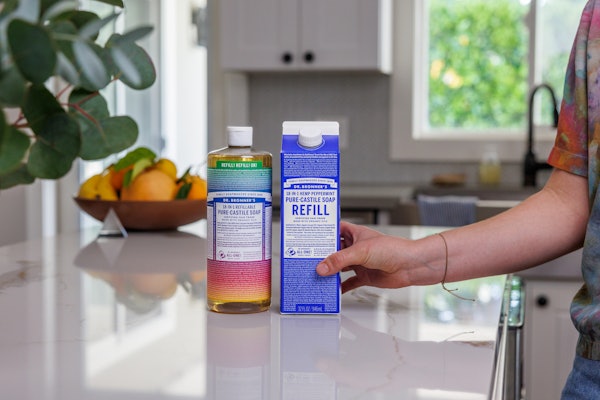There are simply so many foods, processed in so many different ways. They are subject to such a variety of hazards, including microbial and chemical contamination but also intentional tampering by terrorists or others. They are increasingly imported from virtually everywhere, meaning we in the U.S. are to some degree dependent on the reliability of companies and government oversight in each exporting country.
In recent years there have been microbially contaminated spinach and lettuce that have sickened people, more than one large-scale recall of meat due to contamination scares, and instances of contaminants like melamine found in imported infant formula and milk and pet food.
The marvel is not how many incidents there have been, but why there aren’t more. With all sorts of circumstances conspiring against food safety, it’s a wonder there aren’t serious incidents every week.
One guy whose job it is to think about all these things and not be scared is Dr. David Acheson, FDA’s associate commissioner for foods. I spoke with him recently about the FDA’s current and future efforts to protect the food supply now that FDA has issued its one-year progress report on its Food Protection Plan. The three core strategies of the plan are 1) Prevention, 2) Intervention, and 3) Response, the overall goal being to protect domestic and imported food from being accidentally or intentionally contaminated. The Plan applies to each step along the food supply chain, for the entire lifecycle of food, and combines strategies to prevent problems before they occur with strategies for minimizing problems that do occur. (See sidebar for more details.)
Acheson notes that FDA requested about 10 changes in law back when the Plan was first proposed, and though none has been passed, the measures do have wide support. “There has been a lot of support for them. Many of the draft bills that came out of the House have contained much of what we are looking for: Mandating recalls, requiring preventative control, increased record access, those types of things.”
So will those changes in law arrive under the new administration and Congress? “If I had a crystal ball, which I don’t,” Acheson said, “I would suspect, within the next session of Congress, under this new Administration, that that will come together.” He warned that he was only guessing, but offered the guess that “preventative controls will be a high priority. I think that mandatory recall will be a priority because everybody seems to be agreeing that’s a good thing. And I think that there will be something around increasing control of imports, but I don’t know what that would look like.”
He adds, “Another thing that we didn’t have in there that I think is topical is some sort of legislation around traceability, because that was such a nightmare during the salmonella outbreak.” Earlier this year, a series of different fresh vegetables was suspected as the source of a series of illnesses, first tomatoes, then jalapeño and serrano peppers, causing damage to the market for fresh tomatoes.
If food traceability is to be a focus, is Acheson suggesting that foods might be required to feature RFID? No. He agrees that packaging structures and technologies are usually part of the solution when you talk about traceability. But as for RFID, he says, “I think we are not at that level, frankly.” Instead, the emphasis will be on “interoperability between the various parts. You need to be able to know where stuff comes from and where it’s going, and that it doesn’t change its name or its title as its moving down the food chain.”
Some foods are traceable now, of course, but the system could be better, says Acheson. “I think another thing about traceability is that it’s a definite weakness that it doesn’t start at the top” of the food chain. He’s thinking largely about traceability as an aid to investigations of outbreaks. “You really do need to know when you go into a retail store or restaurant that is linked to an outbreak, ‘Where was this stuff from?’”—all the way back to the farm.
Fresh produce is a priority because packaged foods are often already well marked and coded, he notes. He is aware of at least some companies packaging produce at the farm. “They package them right there on the farm and they put the right labels on them and those labels and the information follows all the way through and you can track it.” And some retailers, he says, have made a business decision to move away from loose produce altogether, selling packed produce instead in large part so that it can be labeled and therefore tracked if need be.
So it still remains to be seen whether legal changes will make life tougher on food packaging companies, who already deserve a lot of credit for maintaining the safety of our food in a largely self-regulated industry. Regardless, you can expect enhanced attention to be focused on how food is made, moved, and protected.
Eric can be reached at [email protected], or visit his firm’s Web site at www.ericfgreenbergpc.com.























